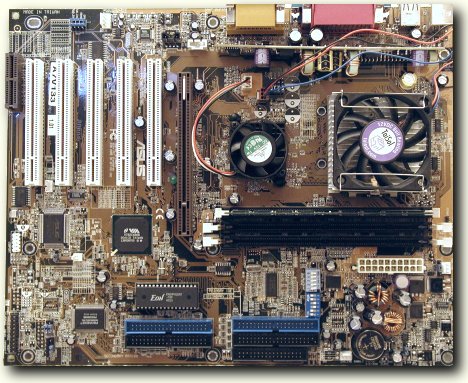The Three Musketeers: Athlon Platforms For 133 MHz FSB
VIA Apollo KT133A - Asus A7V133
On the first look you won't be able to spot any difference between Asus' new A7V133 and the well-known A7V. This is obviously not very surprising, since the only hardware difference is the VT8366A north bridge chip, which enables 133 MHz FSB. Once started you find that the BIOS-setup has become more comfortable though. It is possible to change the processor bus clock in 1 MHz steps and now the processor multiplier does not need to be altered with the jumpers, but can be chosen in the BIOS-setup between x5 and x12.5 as well.
The board comes equipped with 3 PC133 SDRAM DIMM-slots, one AGP-slot, 5 PCI-slots, one CNR-slot, on-board AC97 sound and an additional ATA100 IDE/RAID0 chip from Promise, allowing the board to run with up to eight IDE hard drives.
While the A7V133 can obviously not compete with DDR-SDRAM platforms it makes an excellent overclocking platform. You will see in the benchmarks that Athlon benefits from the 133 MHz processor bus quite a bit and so you can already achieve a performance boost if you only run your Athlon 1000/100 at 1000/133 MHz instead, without even overclocking the processor. The missing DDR-support can be seen as a benefit as well, since it enables you to still use your PC133 memory.
The A7V133 turned out to run as stable and reliable as we are used to from the A7V. It was an excellent platform to bring Athlon up to 1500 GHz together with the Vapochill. The same is valid for the other two motherboards as well though.
Get Tom's Hardware's best news and in-depth reviews, straight to your inbox.
